Cats
The Burmilla Cat: The Perfect Combination Of Charm And Playfulness

The Burmilla Cat: The Perfect Combination of Charm and Playfulness
If you’re a cat enthusiast searching for a unique, affectionate, and strikingly beautiful breed, look no further than the Burmilla cat. With their charming personalities and stunning appearance, these cats have captured the hearts of cat lovers worldwide.
In this article, we’ll dive deep into the world of the Burmilla cat breed, covering everything from its origins to grooming and care. So, let’s begin our journey to discover what makes the Burmilla cat such a captivating breed.
History of the Burmilla Cat Breed
The Burmilla cat breed has a fascinating and unique history that has captured the hearts of cat enthusiasts around the world. Here’s a closer look at how this rare and beautiful breed came to be:
Origins of the Burmilla Cat Breed
The Burmilla cat breed was first discovered in the United Kingdom in 1981 when a Burmese cat named Bambino mated with a Chinchilla Persian named Sanquist.
The resulting litter of kittens had a unique silver coat and charming personality, which quickly caught the attention of cat breeders and enthusiasts.
Development of the breed
Since its accidental creation, the Burmilla breed has been refined and developed by dedicated breeders, with the first breed standard being established in 1984.
Over the years, the breed has gained recognition from various cat organizations, including The International Cat Association (TICA) and the Cat Fanciers’ Association (CFA).
Recognition of the Burmilla Cat Breed
In 1984, the Burmilla cat breed was officially recognized by the Governing Council of the Cat Fancy (GCCF) in the United Kingdom.
Over the next few years, the breed gained recognition from cat associations in other countries, including the Cat Fanciers’ Association (CFA) in the United States, the Canadian Cat Association (CCA), and the Australian Cat Federation (ACF).
Varieties of Burmilla Cats
There are two main types of Burmilla cats: the Shaded Burmilla and the Tipped Burmilla. Shaded Burmilla cats have a darker silver coat with black markings around the face, ears, and tail.
Tipped Burmilla cats have a lighter silver coat with just the tips of their fur being black. Both varieties have a luxurious and plush coat that is soft to the touch.
The popularity of the Burmilla Cat Breed
Although still considered a rare breed, Burmilla cats have gained popularity among cat lovers around the world. Their unique appearance, charming personality, and affectionate nature have made them a favorite among cat enthusiasts.
Today, Burmilla cats can be found in cat shows and pet homes around the world, bringing joy and companionship to their owners.
Personality and Temperament
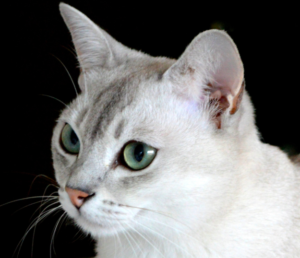
Burmilla cats are known for their friendly, outgoing, and affectionate personalities. Here’s a closer look at their temperament and what makes them such great companions:
Affectionate and Loving
Burmilla cats love attention and enjoy spending time with their owners. They are affectionate and will often seek out their owner’s company, cuddling up in laps or curling up beside them in bed. They are also known for being great with children and other pets.
Intelligent and Curious
Burmilla cats are highly intelligent and curious, and love exploring their surroundings. They enjoy playing with toys, climbing on furniture, and investigating new objects and environments. Their playful nature makes them a great choice for families with children.
Social and Outgoing
Burmilla cats are social and outgoing, and love meeting new people and animals. They are often described as “people cats” because of their love for human companionship. They are also great with other pets and will often play and cuddle with them.
Sensitive and Affected by Noise
While Burmilla cats are social and outgoing, they can also be sensitive to loud noises and sudden movements. They may become easily frightened or stressed in noisy or chaotic environments, so it’s important to provide them with a quiet and calm living space.
Playful and Active
Burmilla cats are playful and active, and require plenty of physical and mental stimulation to stay happy and healthy. They enjoy playing with toys, climbing on furniture, and chasing after objects. They also benefit from interactive play sessions with their owners.
Physical Characteristics
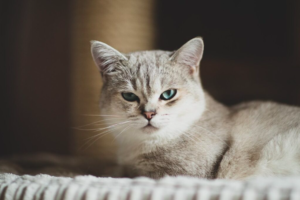
Burmilla cats are a medium-sized breed with a distinctive appearance that sets them apart from other cats. Here’s a closer look at their physical characteristics:
Appearance
The Burmilla cat is a medium-sized breed, known for its elegant and muscular body, expressive green eyes, and luxurious coat.
The breed comes in two coat types: short-haired and semi-longhaired. The short-haired Burmilla has a dense and plush coat, while the semi-longhaired variety has a silky and flowing coat with a plume-like tail.
The breed’s coat comes in a variety of colors, including black, blue, chocolate, lilac, red, cream, and various tortoiseshell and silver shades.
Coat
One of the most distinctive features of the Burmilla cat is its luxurious coat. Their coat is short and plush and is silver in color with darker markings around the face, ears, and tail.
There are two main varieties of Burmilla cats: the Shaded Burmilla and the Tipped Burmilla. Shaded Burmilla cats have a darker silver coat, while Tipped Burmilla cats have a lighter silver coat with just the tips of their fur being black.
Body
Burmilla cats have a muscular build and a distinctive “apple-shaped” head with rounded cheeks and a short, broad nose.
Their eyes are large and expressive and can be green, gold, or blue. They have a short, compact body with a broad chest and shoulders, and a short, thick tail.
Weight
Burmilla cats are a medium-sized breed, typically weighing between 8 and 12 pounds. Male Burmilla cats are generally larger and heavier than females.
Lifespan
With proper care and attention, Burmilla cats can live between 10 and 15 years. Some Burmilla cats may live longer with proper nutrition, exercise, and veterinary care.
Grooming Needs
Burmilla cats have a short, plush coat that requires minimal grooming compared to other long-haired cat breeds. Here’s a closer look at their grooming needs:
Coat Care
Burmilla cats only need to be brushed once or twice a week to remove loose hair and prevent matting. Their short, plush coat does not require regular trimming or clipping, and they do not need to be bathed frequently.
However, if they do get dirty, a gentle shampoo formulated for cats can be used to clean their coat.
Nail Care
Like all cats, Burmilla cats need to have their nails trimmed regularly to prevent them from becoming too long or sharp.
Nail trimming should be done using a pair of sharp, pet-specific nail clippers, and care should be taken to avoid cutting quickly (the pink part of the nail that contains blood vessels and nerves).
Dental Care
Burmilla cats are prone to dental problems, so it’s important to provide them with regular dental care to keep their teeth and gums healthy.
This can be done by feeding them a healthy diet, providing them with dental chews or toys to chew on, and scheduling regular veterinary check-ups to monitor their dental health.
Eye Care
Burmilla cats may be prone to eye problems, so it’s important to keep their eyes clean and free from discharge or irritation. This can be done by wiping their eyes with a soft, damp cloth, and monitoring them for signs of redness, swelling, or discharge.
Diet and Nutrition
Burmilla cats require a balanced and nutritious diet to support their overall health and well-being. Here’s what you need to know about their diet and nutrition:
Feeding Guidelines
Burmilla cats should be fed high-quality, commercial cat food that is formulated for their age, size, and activity level.
The amount of food they need will depend on their age, weight, and activity level, but as a general rule, adult cats should be fed twice a day, with portion sizes ranging from 1/4 to 1/2 cup per meal.
Protein
Protein is an essential nutrient for Burmilla cats and should make up a significant portion of their diet. Look for cat foods that contain high-quality sources of protein, such as chicken, turkey, or fish.
Carbohydrates
While cats do not require carbohydrates in their diet, some cat foods may contain small amounts of carbohydrates, such as rice or barley. However, be sure to avoid cat foods that contain fillers or artificial preservatives.
Water
Burmilla cats require access to fresh water at all times, as dehydration can lead to a range of health problems. Be sure to provide your cat with a clean and easily accessible source of water, and consider adding a water fountain or multiple water bowls throughout your home.
Treats
Treats can be a great way to reward your Burmilla cat and strengthen your bond with them but should be given in moderation. Look for cat treats that are low in calories and contain high-quality ingredients.
Exercise Requirements
Burmilla cats are an active and playful breed that requires regular exercise to stay happy and healthy. Here’s what you need to know about their exercise requirements:
Playtime
Burmilla cats love to play and should be given plenty of opportunities to do so. They enjoy playing with toys, climbing on furniture, and chasing after objects. Regular playtime can help keep your cat mentally stimulated and physically active.
Interactive Play
Interactive play is an important part of keeping your Burmilla cat active and engaged. You can play with your cat using interactive toys, such as feather wands or laser pointers, or by simply tossing a small toy for them to chase after.
Environmental Enrichment
Burmilla cats enjoy exploring their surroundings and should be provided with plenty of opportunities to do so.
You can create an enriched environment for your cat by providing them with scratching posts, climbing structures, and hiding places. You can also rotate their toys and play areas to keep them mentally stimulated.
Exercise Outdoors
While Burmilla cats can be kept as indoor-only cats, some may enjoy going outside for supervised exercise. If you choose to allow your cat outdoors, be sure to do so in a safe and secure environment, such as a fenced-in yard or on a harness and leash.
Exercise for Weight Management
If your Burmilla cat is overweight or obese, regular exercise can be an important part of helping them achieve a healthy weight. Consult with your veterinarian to develop a safe and effective exercise plan for your cat.
Common Health Concerns
Burmilla cats are generally healthy and hardy, but like all cat breeds, they may be prone to certain health issues. Here are some of the most common health concerns that can affect Burmilla cats:
Dental Problems
Burmilla cats are prone to dental problems, including periodontal disease and tooth decay. Regular dental care, including brushing their teeth and providing dental chews or toys to chew on, can help prevent these issues.
Respiratory Infections
Respiratory infections, such as feline herpesvirus and feline calicivirus, are common in cats and can cause symptoms such as sneezing, coughing, and eye discharge.
Burmilla cats may be more susceptible to these infections due to their shorter snouts, which can make it more difficult for them to breathe.
Obesity
Burmilla cats can be prone to obesity if they are overfed or not given enough exercise. Obesity can lead to a range of health problems, including diabetes, arthritis, and heart disease.
Kidney Disease
Chronic kidney disease is a common health concern in older cats, including Burmilla cats. Symptoms can include increased thirst and urination, weight loss, and lethargy. Regular veterinary check-ups can help detect kidney disease early and ensure proper treatment.
Hypertrophic Cardiomyopathy
Hypertrophic cardiomyopathy is a common heart condition in cats, including Burmilla cats. It is characterized by the thickening of the heart muscle, which can lead to symptoms such as difficulty breathing, lethargy, and loss of appetite.
Training and Socialization
Burmilla cats are intelligent and curious cats that can be trained to perform a variety of behaviors. Here’s what you need to know about their training and socialization needs:
Positive Reinforcement Training
Burmilla cats respond well to positive reinforcement training, which involves rewarding good behavior with treats, praise, or playtime. Training sessions should be short and focused and should be done in a calm and quiet environment to avoid distracting your cat.
Litter Box Training
Burmilla cats are generally easy to litter box train, but it’s important to provide them with a clean and easily accessible litter box. The litter box should be placed in a quiet and private location, away from their food and water bowls.
Socialization
Socialization is an important part of raising a well-adjusted and happy Burmilla cat. Early socialization can help your cat feel comfortable around other people, pets, and new environments.
Introduce your cat to new experiences gradually and always use positive reinforcement to reward good behavior.
Obedience Training
Burmilla cats can be trained to perform a variety of behaviors, including coming when called, sitting on command, and walking on a leash.
These behaviors can be taught using positive reinforcement training and should be practiced regularly to reinforce good behavior.
Behavior Modification
If your Burmilla cat exhibits problem behaviors, such as scratching furniture or aggression, behavior modification techniques can be used to address these issues.
Consult with your veterinarian or a professional animal behaviorist for guidance on addressing problem behaviors.
Compatibility with Other Pets and Children
Burmilla cats are generally friendly and sociable cats that can get along well with other pets and children. However, it’s important to introduce them to new pets and people gradually and with supervision to ensure a positive experience.
Here are some tips for introducing your Burmilla cat to other pets and children:
Introducing to Other Pets
Introduce your Burmilla cat to other pets gradually and with supervision. Start with short, supervised interactions and gradually increase the duration and frequency of interactions as your pets become more comfortable around each other.
Provide separate feeding areas and litter boxes to prevent competition or territorial behavior.
Introducing to Children
Burmilla cats are generally good with children, but it’s important to supervise interactions to prevent accidental harm to either the cat or the child.
Teach children how to properly handle and interact with the cat, and provide the cat with a safe space to retreat to if they become overwhelmed or overstimulated.
Providing Safe Spaces
Provide your Burmilla cat with safe spaces to retreat to if they become overwhelmed or stressed. This can include a cat tree, hiding places, or a separate room where they can relax and feel safe.
Adopting a Burmilla Cat
If you’re considering adopting a Burmilla cat, there are a few things to keep in mind to ensure a smooth and successful adoption process. Here are some tips for adopting a Burmilla cat:
Research the Breed
Before adopting a Burmilla cat, research the breed to ensure it’s the right fit for your lifestyle and family. Burmilla cats are active and playful cats that require regular exercise and attention.
They are also generally friendly and sociable, making them a good fit for families with children or other pets.
Find a Reputable Breeder or Rescue
If you decide to adopt a Burmilla cat, it’s important to find a reputable breeder or rescue organization.
A reputable breeder will provide you with health records and information on the cat’s lineage, while a rescue organization can provide you with information on the cat’s temperament and behavior.
Schedule a Meet-and-Greet
Before adopting a Burmilla cat, schedule a meet-and-greet with the cat to ensure a good fit. Spend time with the cat, observe their behavior, and ask questions about their history and temperament.
Prepare Your Home
Before bringing your Burmilla cat home, prepare your home for its arrival. This includes providing them with a litter box, food and water bowls, a scratching post, and a comfortable sleeping area.
Ensure that your home is free of hazards, such as toxic plants or small objects that could be swallowed.
Provide Proper Care
Once you bring your Burmilla cat home, provide them with proper care and attention. This includes regular veterinary check-ups, proper nutrition, exercise, and grooming.
Provide them with a safe and clean environment to live in, and provide them with plenty of playtime and interactive toys to keep them mentally stimulated.
Burmilla Cat Care Tips
Burmilla cats are relatively low-maintenance cats that require basic care and attention to stay healthy and happy. Here are some care tips to keep in mind:
Regular Veterinary Check-Ups
Burmilla cats should receive regular veterinary check-ups to ensure they are in good health. Your veterinarian can also provide guidance on diet, exercise, and preventive care, such as vaccinations and parasite control.
Clean and Safe Environment
Burmilla cats should be provided with a clean and safe environment to live in. This includes regular cleaning of their litter box, food and water bowls, and sleeping areas. Ensure that your home is free of hazards, such as toxic plants or small objects that could be swallowed.
Proper Nutrition
Burmilla cats require a balanced and nutritious diet to support their overall health and well-being. Provide your cat with high-quality, commercial cat food that is formulated for their age, size, and activity level. Avoid overfeeding and provide fresh water at all times.
Regular Exercise
Burmilla cats are an active and playful breed that requires regular exercise to stay healthy and happy. Provide your cat with opportunities for playtime and interactive play, as well as environmental enrichment through climbing structures and hiding places.
Grooming Needs
Burmilla cats have low-maintenance grooming needs compared to other long-haired cat breeds. They only need to be brushed once or twice a week to remove loose hair and prevent matting. Regular nail, dental, and eye care can also help keep your cat healthy.
Behavior and Training
Burmilla cats are intelligent and trainable cats that respond well to positive reinforcement training. Litter box training and socialization should be started early, and problem behaviors can be addressed using behavior modification techniques.
Conclusion
In conclusion, the Burmilla cat breed is a wonderful choice for anyone looking for a unique, affectionate, and playful feline companion. With proper care and attention, your Burmilla cat can provide you with years of joy and companionship.
If you’re considering adding a Burmilla cat to your family, be sure to do your research, find a reputable breeder or rescue organization, and provide your cat with the love, care, and attention they deserve.
Questions People Also Ask: (FAQs)
Are Burmilla cats hypoallergenic?
While no cat breed is truly hypoallergenic, some people with allergies may find they react less severely to Burmilla cats due to their lower shedding levels. However, individual reactions may vary, and it’s essential to spend time with a Burmilla cat before adopting if you have cat allergies.
How much does a Burmilla cat cost?
The price of a Burmilla cat can vary based on factors such as the breeder, coat type, and lineage. On average, Burmilla kittens can cost anywhere from $800 to $2,000. It’s essential to prioritize the health and well-being of the cat over the initial cost.
Can Burmilla cats be left alone?
While Burmilla cats are relatively independent, they still require companionship and mental stimulation. If left alone for long periods, they may become bored, lonely, and potentially destructive. If you have a busy lifestyle, consider adopting a companion pet or providing interactive toys to keep your Burmilla cat entertained in your absence.
Are Burmilla cats good for first-time cat owners?
Yes, the Burmilla cat’s friendly and adaptable nature makes them an excellent choice for first-time cat owners. However, it’s crucial to do your research and understand the breed’s specific needs and requirements to ensure a happy and healthy life together.
How can I find a reputable Burmilla cat breeder?
To find a reputable Burmilla cat breeder, start by checking with cat breed organizations, such as TICA or CFA, for breeder referrals. Additionally, seek recommendations from veterinarians, pet professionals, and fellow cat enthusiasts. Always visit the breeder in person and ask questions about their breeding practices, health screenings, and kitten socialization.
Do Burmilla cats enjoy outdoor activities?
Burmilla cats, like most breeds, can enjoy outdoor activities if introduced to them early in life and under proper supervision. However, it’s crucial to keep your cat safe by using a harness and leash when venturing outdoors, or by providing a secure, enclosed outdoor space like a patio. Remember that indoor cats generally live longer, healthier lives due to the reduced risk of accidents, disease, and other outdoor hazards.
How do Burmilla cats get along with dogs?
Burmilla cats typically adapt well to living with dogs, especially if introduced at a young age and properly socialized. The key to a successful cat-dog relationship is a slow, supervised introduction process, allowing both pets to adjust to each other’s presence gradually. It’s essential to ensure that both pets have their own separate spaces for retreat and relaxation.
What type of litter should I use for my Burmilla cat?
Burmilla cats generally don’t have specific litter preferences, but it’s essential to choose a high-quality, unscented, clumping litter for optimal hygiene and odor control. Monitor your cat’s reaction to the litter and adjust as needed to ensure they feel comfortable and are using the litter box consistently.
We appreciate you for taking the time to read this article!
Finally, we hope you found this article interesting? And what do you think about ”The Burmilla Cat: The Perfect Combination Of Charm And Playfulness!?”
Please feel free to share or inform your friends about this article and this site, thanks!
And let us know if you observe something that isn’t quite right.
Cats
Clever Cats: Breeds That Learn Fast

Clever Cats: Breeds That Learn Fast
Cats have always fascinated us with their agility, independence, and sometimes enigmatic behavior. Among the vast array of feline breeds, some stand out for their remarkable intelligence and ability to learn quickly.
In this article, we will delve into the world of these exceptional cat breeds, exploring their unique characteristics, training capabilities, and what makes them such quick learners.
Whether you’re a seasoned cat owner or considering adopting a new feline friend, this comprehensive guide will help you understand the breeds that are not only intelligent but also a joy to train.
Why Intelligence Matters in Cats
Understanding Feline Intelligence
Feline intelligence is a multi-faceted trait that encompasses problem-solving abilities, social learning, and adaptability. Unlike dogs, cats often showcase their intelligence in more subtle ways, such as manipulating objects to get what they want or learning routines and commands.
Benefits of Owning Intelligent Cats
Owning an intelligent cat comes with several benefits. These cats are more interactive and engaging, making them excellent companions. They can learn tricks, follow commands, and even understand basic household rules, which makes living with them more enjoyable and less challenging.
Top Cat Breeds Known for Their Intelligence
Abyssinian
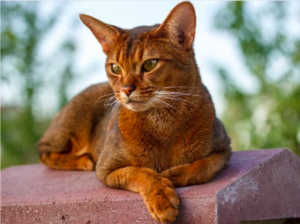
Overview
The Abyssinian is often hailed as one of the smartest cat breeds. Known for their curiosity and playful nature, Abyssinians are quick learners who thrive on mental stimulation.
Training and Activities
Abyssinians are highly trainable and enjoy interactive toys and puzzle feeders. They can learn tricks such as fetching and even walking on a leash. Their love for heights means they appreciate cat trees and climbing structures.
Siamese
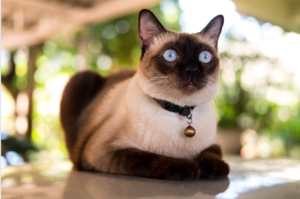
Overview
Siamese cats are not only intelligent but also highly vocal and sociable. They form strong bonds with their owners and are always eager to engage in activities.
Training and Activities
Siamese cats are quick to learn tricks and commands. They enjoy interactive play and can be trained to perform simple tasks like opening doors or retrieving items. Their vocal nature also makes them responsive to verbal cues.
Bengal
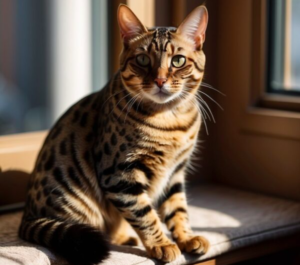
Overview
Bengals are known for their striking appearance and high energy levels. Their intelligence is reflected in their ability to solve problems and learn complex tasks.
Training and Activities
Bengals enjoy activities that challenge their minds, such as agility courses and puzzle toys. They can be trained to walk on a leash and perform tricks. Providing them with interactive playtime helps in channeling their energy positively.
Burmese
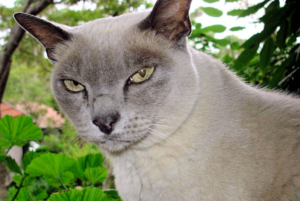
Overview
Burmese cats are affectionate, people-oriented, and intelligent. They enjoy being involved in family activities and can be trained to follow various commands.
Training and Activities
Burmese cats are quick learners and respond well to positive reinforcement. They enjoy learning tricks, playing fetch, and interactive games that stimulate their minds.
Scottish Fold
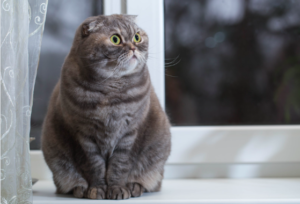
Overview
Scottish Folds are known for their distinctive folded ears and sweet demeanor. Despite their calm appearance, they are intelligent and can learn quickly.
Training and Activities
Scottish Folds enjoy interactive toys and games. They can learn tricks and commands and appreciate routines that keep their minds engaged.
Training Tips for Intelligent Cats
Start Early
Begin training your cat as early as possible. Kittens are more receptive to learning new behaviors and routines.
Use Positive Reinforcement
Reward your cat with treats, praise, or playtime whenever they successfully perform a desired behavior. Positive reinforcement strengthens the association between the action and the reward.
Keep Sessions Short and Fun
Cats have shorter attention spans than dogs, so keep training sessions brief and enjoyable. Incorporate playtime to make learning fun for your cat.
Be Patient and Consistent
Patience and consistency are key when training cats. Repeat commands and routines regularly, and avoid punishing your cat for mistakes. Consistency helps reinforce learning and builds trust.
Challenges of Training Intelligent Cats
Independence and Stubbornness
Intelligent cats can sometimes be independent and stubborn. They might choose to ignore commands if they are not in the mood, so it’s important to understand their behavior and work with it.
Need for Mental Stimulation
Highly intelligent cats require constant mental stimulation. Boredom can lead to behavioral issues, so ensure they have plenty of toys, activities, and interaction to keep their minds engaged.
Managing High Energy Levels
Breeds like Bengals have high energy levels that need to be managed. Providing them with enough physical and mental exercise is crucial to prevent destructive behavior.
Living with Intelligent Cats
Creating an Enriched Environment
An enriched environment is essential for intelligent cats. This includes a variety of toys, climbing structures, scratching posts, and interactive feeders to keep them stimulated.
Social Interaction
Intelligent cats thrive on social interaction. Spend quality time playing, training, and simply bonding with your cat to ensure they feel valued and engaged.
Understanding Their Needs
Each intelligent breed has its own unique needs and preferences. Understanding these and catering to them will help you build a strong and positive relationship with your cat.
Conclusion
Owning an intelligent cat can be an incredibly rewarding experience. These quick learners bring joy, challenge, and companionship to their owners. By understanding their unique characteristics and providing the right environment and training, you can foster a deep and fulfilling relationship with your feline friend.
Whether you choose an Abyssinian, Siamese, Bengal, Burmese, or Scottish Fold, you’re sure to enjoy the remarkable intelligence and personality they bring into your home.
Frequently Asked Questions (FAQs)
What makes a cat breed intelligent?
Intelligent cat breeds often show high levels of problem-solving abilities, adaptability, and social learning. They can quickly learn commands, tricks, and routines.
Can all cats be trained?
While some breeds are more receptive to training than others, all cats can be trained to some extent. Patience, consistency, and positive reinforcement are key to successful training.
What are the best toys for intelligent cats?
Interactive toys, puzzle feeders, and climbing structures are ideal for intelligent cats. These toys provide mental stimulation and keep them engaged.
How do I keep my intelligent cat from getting bored?
Provide a variety of toys, engage in regular playtime, and introduce new activities regularly. Rotating toys and creating an enriched environment also help prevent boredom.
Are intelligent cats more difficult to care for?
Intelligent cats can be more demanding in terms of mental stimulation and interaction. However, with the right approach and environment, they can be delightful companions.
We appreciate you for taking the time to read this article!
Finally, we hope you found this article interesting? And what do you think about ”Clever Cats: Breeds That Learn Fast!?”
Please feel free to share or inform your friends about this article and this site, thanks!
And let us know if you observe something that isn’t quite right.
Cats
The Enchanting Scottish Fold: A Guide to the Adorable Feline with Folded Ears
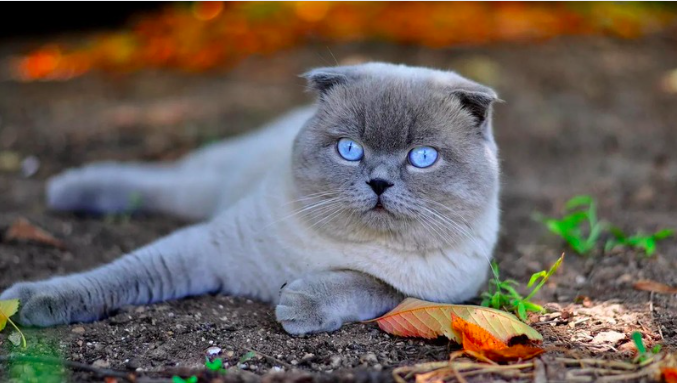
The Enchanting Scottish Fold: A Guide to the Adorable Feline with Folded Ears
Welcome to the world of the Scottish Fold cat, where charm and curiosity meet in an irresistibly adorable package. With their distinctive folded ears and sweet expression, Scottish Folds have captured the hearts of cat lovers around the world. Originally hailing from Scotland, these cats are known for their gentle demeanor, playful nature, and loving personality.
In this comprehensive guide, we will delve into the fascinating world of Scottish Fold cats, exploring their history, physical characteristics, personality traits, and care requirements. Whether you’re a seasoned cat owner or considering adding a feline friend to your family, the Scottish Fold’s unique charm and affectionate nature make them a delightful addition to any home. Join us as we unravel the enchanting tale of the Scottish Fold cat and discover why they are such beloved companions.
Fold
Overview
The Scottish Fold cat is a charming and distinctive breed known for its unique folded ears and sweet expression. Originating from Scotland in the 1960s, these cats have captured the hearts of many with their endearing appearance and affectionate nature. Scottish Folds are known for their gentle and loving temperament, making them wonderful companions for families and individuals alike.
History and Origins
The Scottish Fold breed traces its roots back to a white barn cat named Susie, who was found in Scotland in the early 1960s. Susie had a unique genetic mutation that caused her ears to fold forward, giving her an owl-like appearance. This trait was passed down to her kittens, and thus, the Scottish Fold breed was born. The breed quickly gained popularity for its distinctive look and friendly demeanor, and it was officially recognized by cat registries in the 1970s.
Physical Characteristics
- Folded Ears: The most distinctive feature of the Scottish Fold is its folded ears, which give the cat a sweet and owl-like appearance. Not all Scottish Folds have folded ears; some may have straight ears, known as “straights,” which are also common in the breed.
- Coat and Colors: Scottish Folds can have either a short or long coat, both of which are dense and plush. They come in a variety of colors and patterns, including tabby, tortoiseshell, and solid colors like white, black, and blue.
- Body Structure: Scottish Folds are medium-sized cats with a rounded appearance. They have sturdy bodies, round faces, and large, expressive eyes that give them a sweet and gentle expression.
Personality and Behavior
Scottish Folds are known for their calm and laid-back demeanor. They are affectionate cats that enjoy being around people and are often described as “lap cats” due to their love of cuddling. They are also known for their playful nature and enjoy interactive toys and games. Scottish Folds are generally good with children and other pets, making them a great choice for families.

Health and Care
- Ear Care: Due to their folded ears, Scottish Folds may be prone to ear infections. It’s important to regularly check and clean their ears to prevent issues.
- Grooming: Scottish Folds have dense coats that require regular grooming to prevent matting and tangling. Weekly brushing is usually sufficient to keep their coat in good condition.
- Health Concerns: Scottish Folds are generally healthy, but they may be prone to certain genetic conditions, including a skeletal disorder known as osteochondrodysplasia. Responsible breeding practices can help minimize the risk of these health issues.
Training and Activities
Scottish Folds are intelligent cats that can be trained to perform tricks and commands. They enjoy interactive play and benefit from toys that stimulate their minds and bodies. Providing them with scratching posts and other outlets for their natural behaviors can help keep them happy and healthy.
Compatibility with Families and Other Pets
Scottish Folds are known for their gentle and affectionate nature, making them great companions for families. They are good with children and other pets, including dogs, and can adapt well to different environments. Their loving and sociable nature makes them a popular choice for households looking for a friendly and affectionate pet.
Conclusion
The Scottish Fold cat is a unique and charming breed known for its folded ears and sweet expression. With their gentle demeanor and affectionate nature, Scottish Folds make wonderful companions for families and individuals alike. Whether you’re looking for a lap cat to cuddle with or a playful friend to keep you entertained, the Scottish Fold cat is sure to bring joy and companionship to your home.
FAQs about Scottish Fold Cats
Why do Scottish Folds have folded ears?
Scottish Folds have a genetic mutation that affects the cartilage in their ears, causing them to fold forward. This unique trait gives them their distinctive appearance.
Are Scottish Folds prone to ear problems due to their folded ears?
Yes, Scottish Folds may be more prone to ear infections due to the fold in their ears, which can trap dirt and moisture. Regular cleaning and monitoring of their ears can help prevent issues.
Do Scottish Folds have any health issues associated with their folded ears?
Scottish Folds may be prone to a condition called osteochondrodysplasia, which affects the development of their cartilage and bones. Responsible breeding practices can help reduce the risk of this condition.
Are Scottish Folds good with children and other pets?
Scottish Folds are known for their gentle and friendly nature, making them good companions for families with children and other pets. They enjoy socializing and being part of the family.
Do Scottish Folds require a lot of grooming?
Scottish Folds have dense coats that require regular grooming to prevent matting and tangles. Weekly brushing is recommended to keep their coat in good condition.
We appreciate you for taking the time to read this article!
Finally, we hope you found this article interesting? And what do you think about ”The Enchanting Scottish Fold: A Guide to the Adorable Feline with Folded Ears!?”
Please feel free to share or inform your friends about this article and this site, thanks!
And let us know if you observe something that isn’t quite right.
Cats
The Enchanting Burmese Cat: Affectionate, Playful, and Loyal
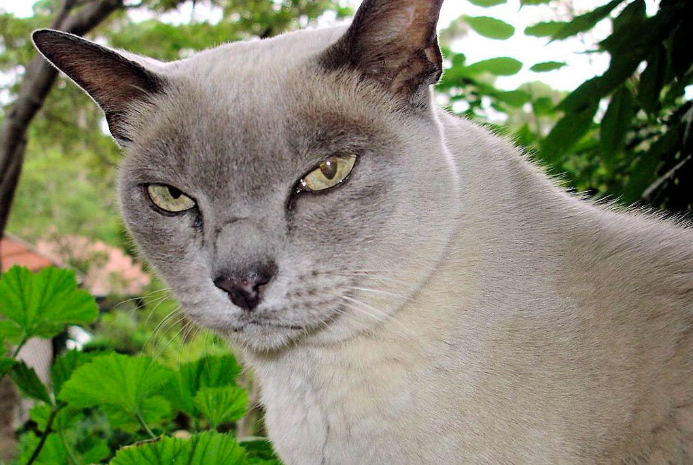
The Enchanting Burmese Cat: Affectionate, Playful, and Loyal
Enter the world of the Burmese cat, where elegance meets affection in a charming feline companion. Originating from the temples of Burma, these cats have captured the hearts of cat lovers worldwide with their striking appearance and loving nature. With their sleek coats, expressive eyes, and playful demeanor, Burmese cats are not just pets; they are cherished members of the family.
In this comprehensive guide, we delve into the captivating world of Burmese cats, exploring their history, physical characteristics, personality traits, and care requirements. Whether you’re a seasoned cat owner or considering adding a feline friend to your family, the Burmese cat’s unique blend of beauty, intelligence, and affection is sure to captivate you. Join us as we unravel the enchanting tale of the Burmese cat and discover why they are such beloved companions.
Burmese
Overview
The Burmese cat is a breed known for its striking appearance and affectionate nature. Originating from Burma (now Myanmar), these cats are renowned for their sleek, muscular bodies, expressive eyes, and silky coats. Burmese cats are often described as “people-oriented,” as they form strong bonds with their human companions and enjoy being part of the family. Their playful and curious nature makes them delightful companions for both children and adults alike.
History and Origins
The history of the Burmese cat can be traced back to ancient Burma, where they were considered sacred and kept by monks in temples. They were later brought to the West in the early 20th century and quickly gained popularity for their striking appearance and affectionate personality. The breed has since become a favorite among cat enthusiasts worldwide, known for its loving and loyal nature.
Physical Characteristics
- Coat and Colors: Burmese cats have short, sleek coats that lie close to the body. They come in a variety of colors, including sable, champagne, blue, and platinum. The coat is soft and silky to the touch, adding to the breed’s overall charm.
- Body Structure: Burmese cats are medium-sized with a muscular build. They have rounded heads, large, expressive eyes, and short, straight noses. Their compact bodies give them a sturdy appearance, and they move with grace and agility.
- Eyes and Ears: Their eyes are one of their most striking features, being large, expressive, and usually a deep, rich color that complements their coat. Their ears are medium-sized, slightly rounded at the tips, and set wide apart on the head.
Personality and Behavior
Burmese cats are known for their affectionate and sociable nature. They are often described as “dog-like” due to their tendency to follow their owners around the house and seek out human companionship. They are also highly intelligent and enjoy interactive play, making them great companions for families with children or other pets.
In addition to their affectionate nature, Burmese cats are also known for their vocalizations. They have a soft, sweet voice that they use to communicate with their owners, often engaging in “conversations” and expressing their needs and desires.

Health and Care
- Grooming: Burmese cats have short coats that require minimal grooming. Weekly brushing is usually sufficient to remove loose hair and keep their coat shiny. They also benefit from regular dental care to prevent oral health issues.
- Diet: A high-quality, balanced diet is essential for maintaining the health and vitality of Burmese cats. They should be fed a diet that is appropriate for their age, size, and activity level to ensure they receive the nutrients they need.
- Health Concerns: Burmese cats are generally healthy, but they can be prone to certain genetic conditions such as hypertrophic cardiomyopathy (HCM) and diabetes. Regular veterinary check-ups and a healthy diet can help manage these risks.
Training and Activities
Burmese cats are intelligent and can be trained to perform various tricks and commands. They enjoy interactive play and thrive on mental stimulation. Providing them with toys, puzzle feeders, and opportunities for play can help keep them entertained and prevent boredom.
Compatibility with Families and Other Pets
Burmese cats are known for their loving and social nature, making them great companions for families. They get along well with children and other pets, including dogs, as long as they are properly introduced. Their affectionate demeanor and playful nature make them a popular choice for households looking for a friendly and engaging pet.
Conclusion
The Burmese cat is a breed beloved for its affectionate nature, striking appearance, and playful personality. Whether you are looking for a loyal companion or a playful friend, the Burmese cat is sure to bring joy and warmth to your home. With their loving nature and sociable demeanor, Burmese cats make wonderful pets for families and individuals alike, enriching their lives with their presence and affection.
FAQs about Burmese Cats
What is the temperament of a Burmese cat like?
Burmese cats are known for their affectionate and social nature. They are often described as “dog-like” due to their loyalty and tendency to follow their owners around the house. They enjoy being involved in family activities and form strong bonds with their human companions.
Are Burmese cats good with children and other pets?
Yes, Burmese cats are generally good with children and other pets. They are playful and enjoy interactive play, making them great companions for families with children. They also get along well with other pets, including dogs, especially if they are introduced properly.
Do Burmese cats require a lot of grooming?
Burmese cats have short, sleek coats that require minimal grooming. Weekly brushing is usually sufficient to remove loose hair and keep their coat shiny. They also benefit from regular dental care to prevent oral health issues.
Are Burmese cats vocal?
Burmese cats are known for their soft, sweet voice, but they are not excessively vocal. They use their voice to communicate with their owners, often engaging in “conversations” and expressing their needs and desires.
What kind of environment is best for a Burmese cat?
Burmese cats thrive in environments where they have plenty of opportunities for play and interaction. They enjoy being part of the family and should have access to toys, scratching posts, and other enrichment activities. They also enjoy having access to outdoor enclosures or safe outdoor spaces where they can explore and indulge their natural instincts.
We appreciate you for taking the time to read this article!
Finally, we hope you found this article interesting? And what do you think about ”The Enchanting Burmese Cat: Affectionate, Playful, and Loyal!?”
Please feel free to share or inform your friends about this article and this site, thanks!
And let us know if you observe something that isn’t quite right.
-

 Pet Care2 years ago
Pet Care2 years agoThe Best Dog Collars For 2022
-

 Dogs2 years ago
Dogs2 years agoBichon Frise: The Happy, Playful, and Cuddly Companion
-

 Trending Pet Stories1 year ago
Trending Pet Stories1 year ago2023 ‘World’s Ugliest Dog’ Winner: Scooter’s Tale of Resilience
-

 Animals2 years ago
Animals2 years agoAre There Animals Having Down Syndrome?
-

 Pets2 years ago
Pets2 years agoThe Fascinating World Of The Red Chameleon
-

 Dogs2 years ago
Dogs2 years agoTop 10 Most Popular Dog Breeds According To AKC.
-

 Dogs2 years ago
Dogs2 years ago21 Dog Breeds That Resemble Bears Or Teddy Bears!
-

 Dogs2 years ago
Dogs2 years agoEskimo Dogs from Canada – What Are They? – Find Out!







